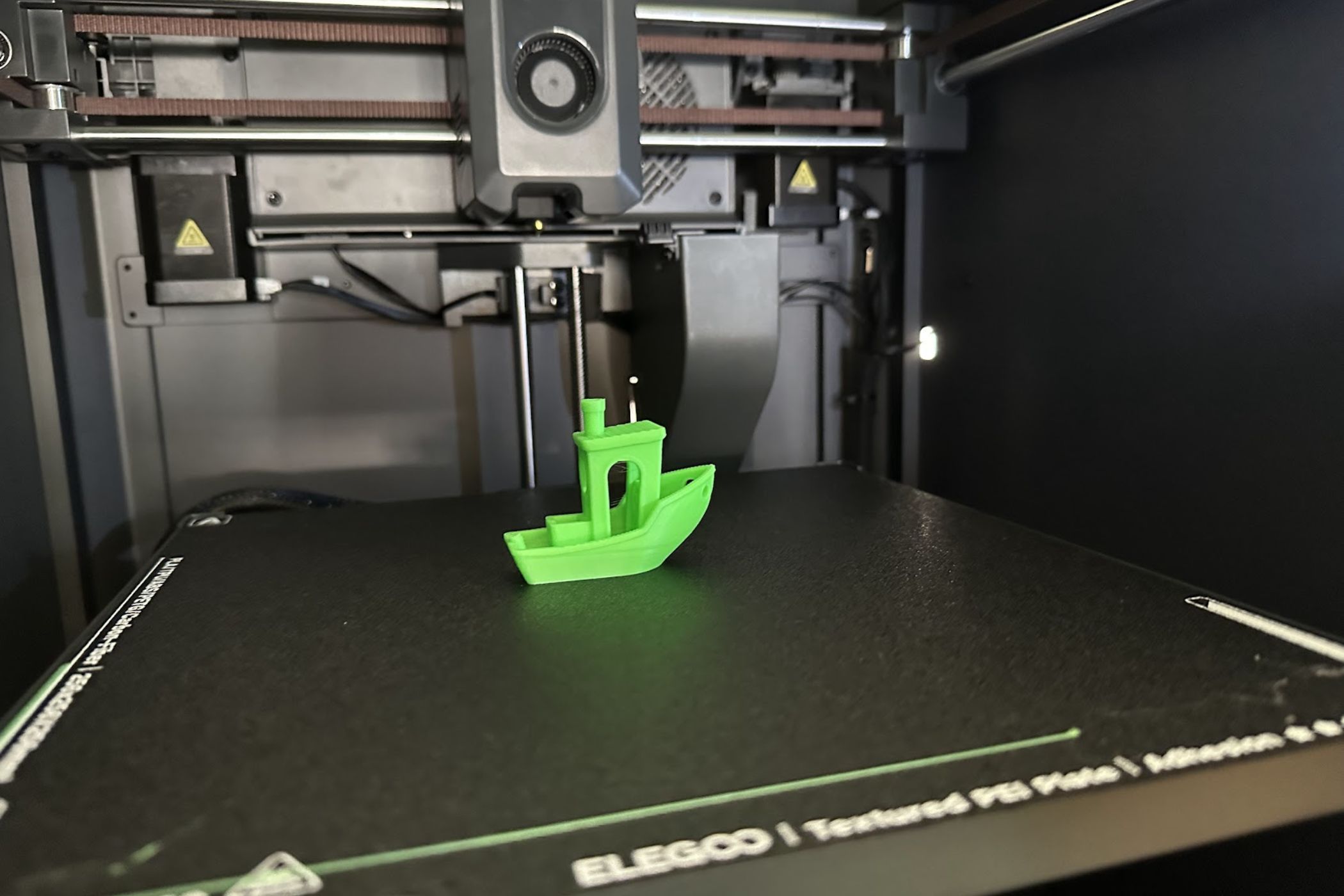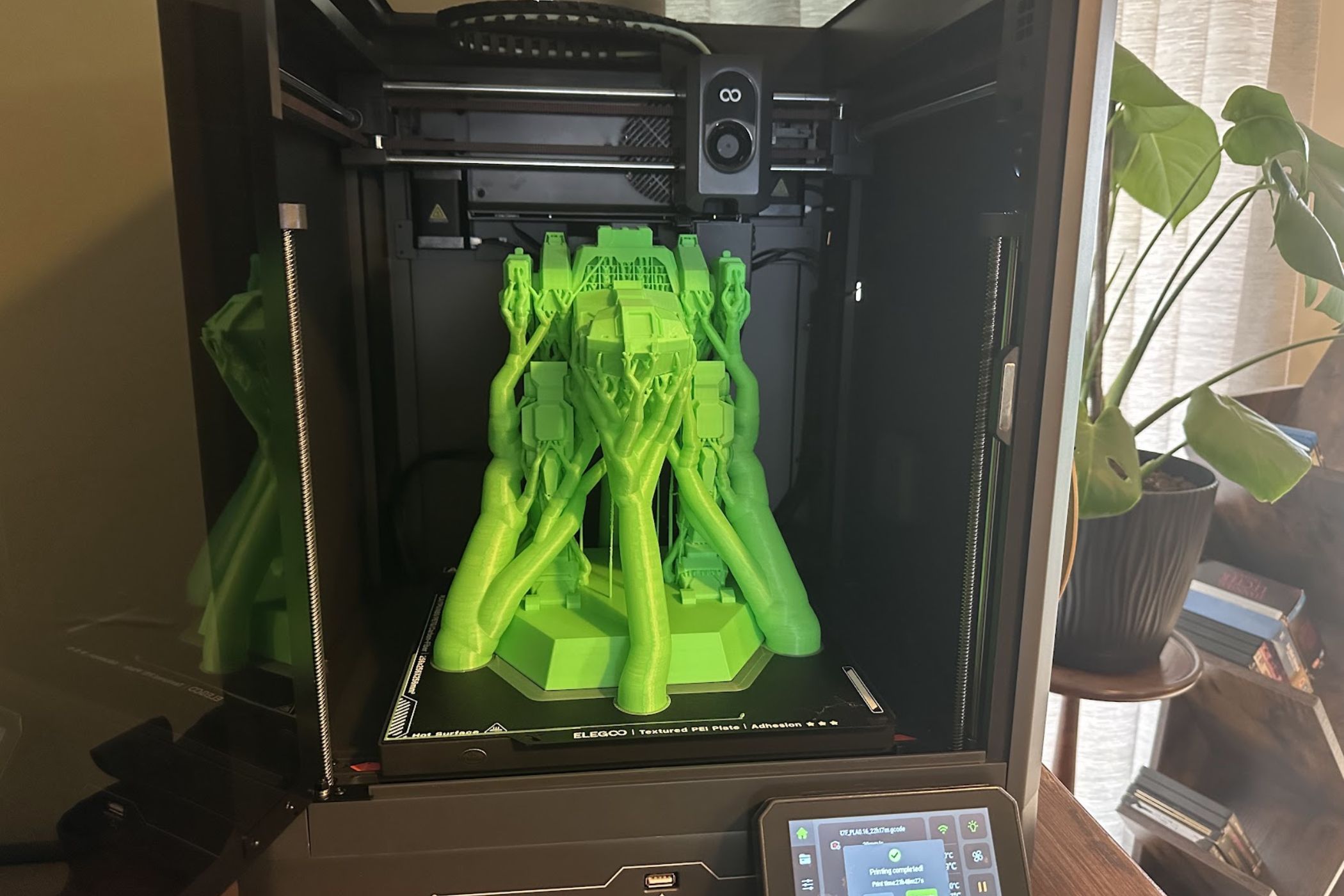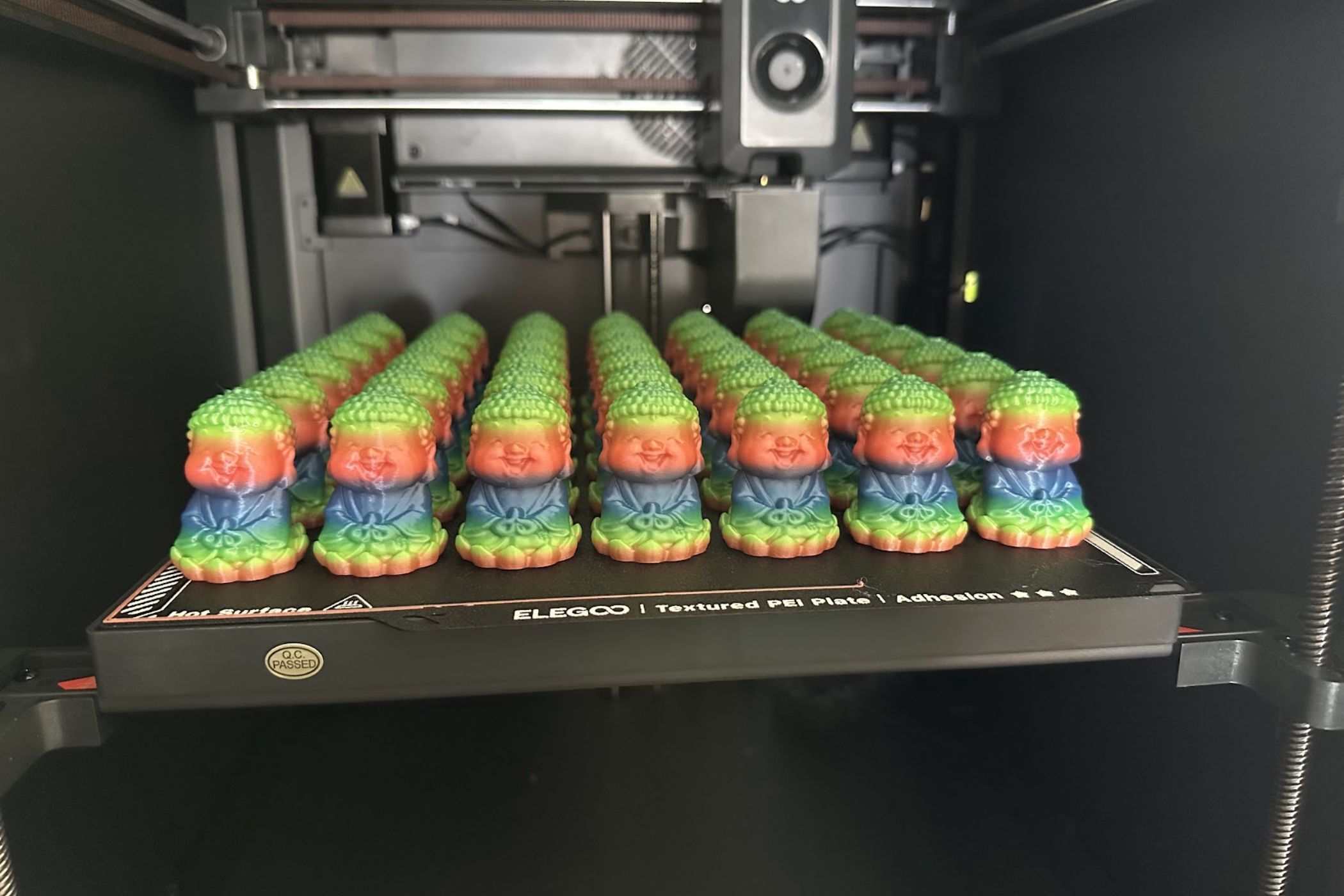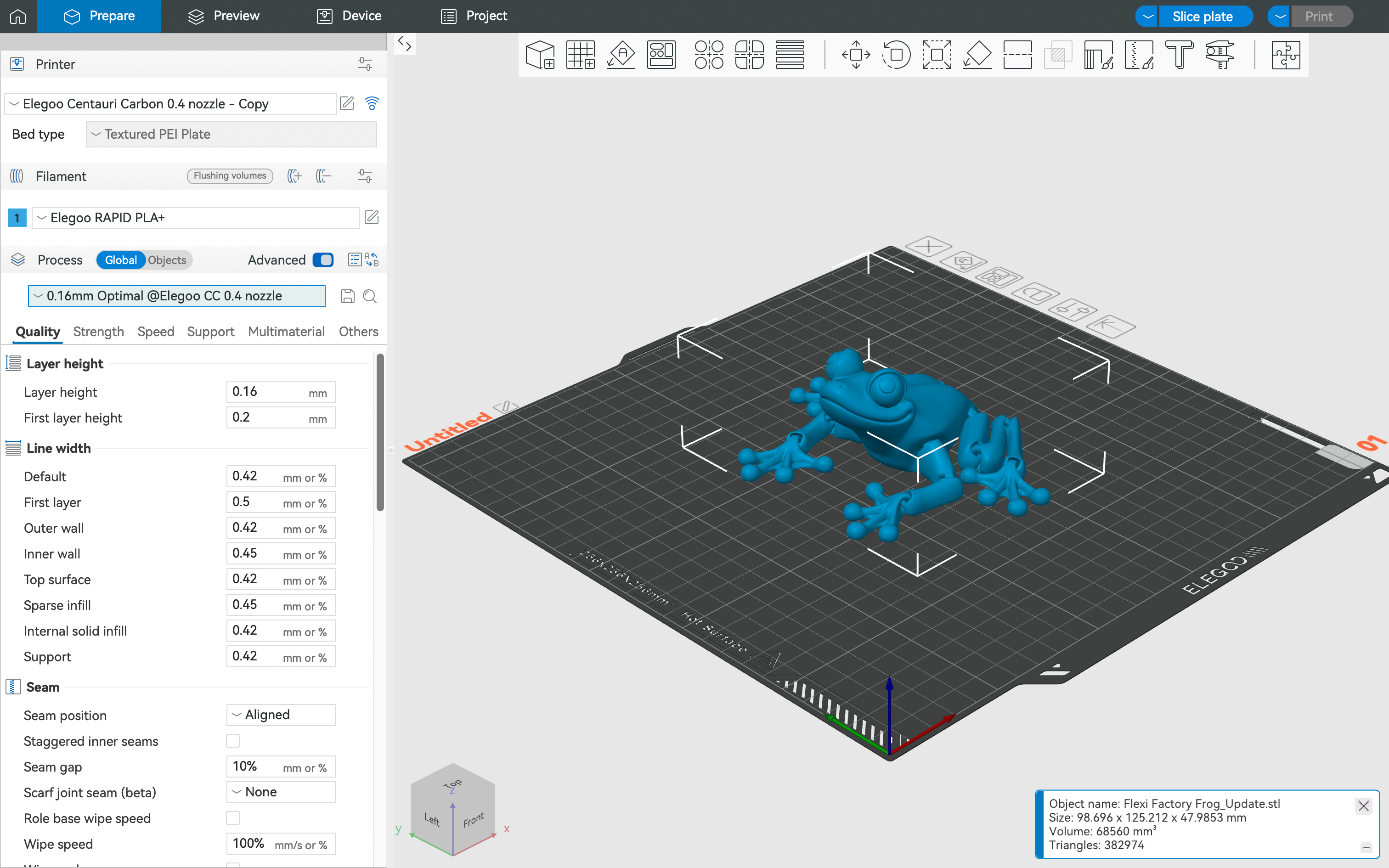The Centauri Carbon is one of those rare market-disrupting products that makes you re-evaluate every other product it competes with. The Carbon would be an excellent product at twice the price, which makes it almost unbelievable that Elegoo is offering so much, for so little.
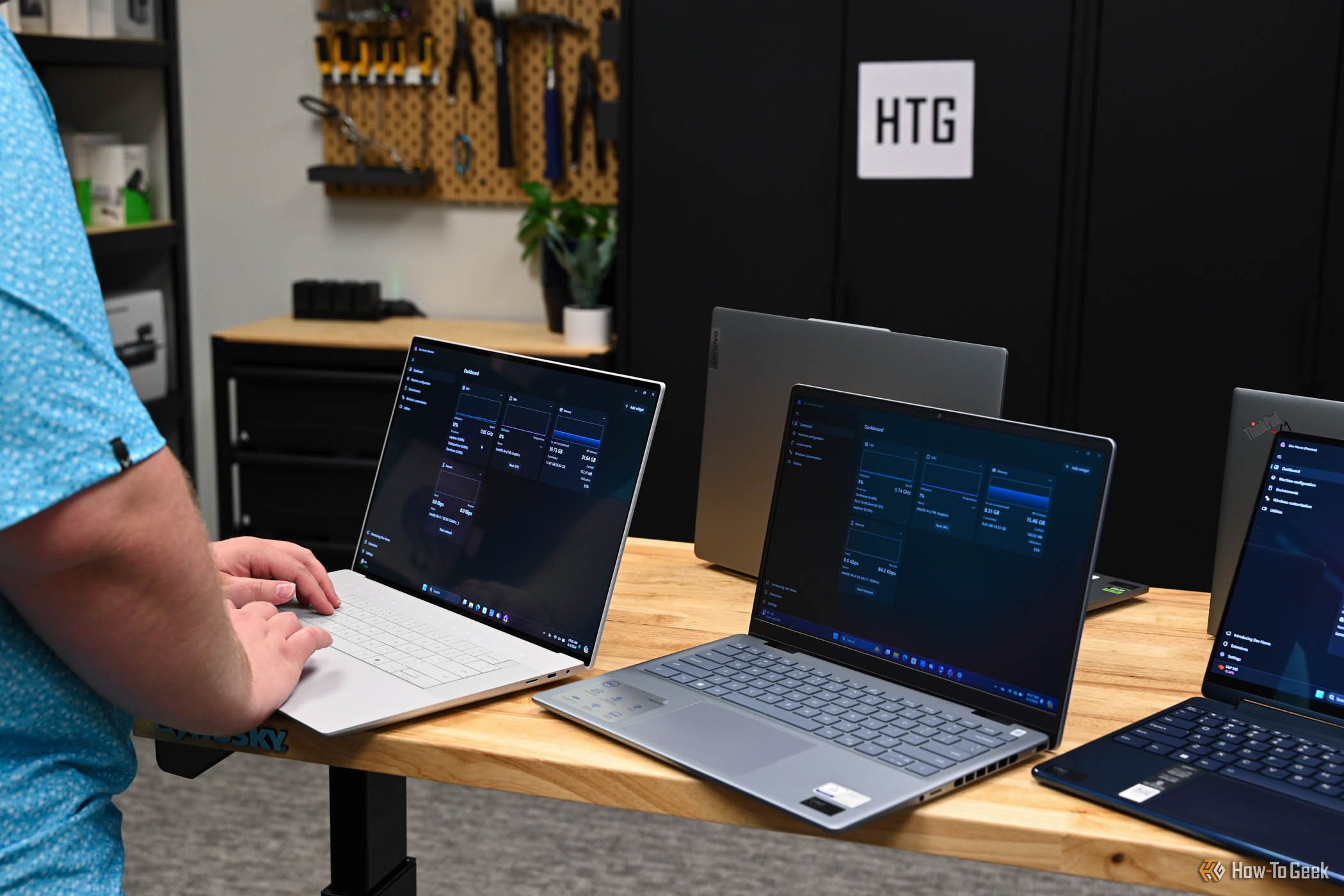
SEE OUR PROCESS
How We Test and Review Products at How-To Geek
We go hands-on with every product to ensure it’s worth your time and money.
Price and Availability
The Elegoo Centauri Carbon is available directly from Elegoo, and you can either order or pre-order the printer, depending on whether the current production batch is sold out or not. There is only one option for $299, although there’s the (as of this writing) unreleased Centauri, which is an unenclosed, stripped-down model that shaves another $100 off the price.
In the box you’ll find the Centauri Carbon itself, along with a small toolkit and some sample filament so that you can set up and test the printer even without a fill roll of filament.
A Quick and Easy Setup Process
The Centauri Carbon is probably the fastest and easiest printer I’ve ever had to set up. Just take it out ot the box, remove the packing material, attach the included screen, and remove the locking screws that keep the bed in place during transport. Elegoo really doesn’t want you to forget this step as both the Elegoo rep, numerous paper notices, the big red stickers, and a reminder message at first startup made it impossible to forget.
The physical setup was fast and easy, but the self-calibration and leveling process is one of the longest and most involved I’ve seen. It took around 20 minutes before the Centauri Carbon was ready to print its first object. However, you only have to do this once, and then you won’t do it again until you move the printer or you notice something wrong. However, I tend to do auto-calibration on printers once a month just to be safe.
Impressive Build Quality and Attention to Detail
At this price, I expected the Centauri Carbon to feel flimsy, but that could not be further from the truth. The steel frame is rock-solid, and the whole printer comes across as solidly built. It looks and feels far more expensive than it is.
It also has lots of neat little features that show Elegoo has been paying attention to the small annoyances some other printers have. For example, the back of the heated print base has lifted corners, so you can easily align the build plate quickly. The plate itself is double-sided, with two different adhesion levels depending on your needs.
There’s a waste chute at the back, along with a scraper and silicon brush, which allows the print head to neatly get rid of old filament and clean the nozzle in seconds. The plastic chain that houses the wiring and filament tube likewise has a neat slot on the left side of the printer, ensuring that it doesn’t push and pop against the side of the enclosure the way my Creality K1 Max sometimes does.

Related
Creality K1 Max Review: 3D Printing Goes Mainstream
The Creality K1 Max brings a large build volume and advanced automation to a consumer-friendly budget.
Smart Cost Cutting Where It Matters the Most
There are some things you won’t find on the Centauri Carbon that are present on more expensive competing Core XY printers. For example, while it does have a camera so you can remotely monitor your prints or make timelapse videos, there’s no AI error detection as you’d find on, for example, the Creality K-series of printers. Except, I’ve had to turn this feature off because it produces false positives more often than not, so that’s no loss from my perspective.
Likewise, there’s no lidar scanner here, which more expensive printers use to check that the first layer of the print is good. Which is a good feature, and I would have missed it on the Centauri Carbon, if there was ever anything wrong with the first layer or any layers following that one. The fact is that in order to cut costs, the Centauri Carbon objectively has fewer features, but I also never had to think about that even once in the 100+ hours I printed with the system before jotting down my final thoughts.
Amazing Print Performance
Speaking of print performance, I have zero complaints. The Centauri Carbon is fast as a core XY printer should be, its prints are sharp and detailed, and generally have little or no post-cleaning to do compared to the same prints on my K1 Max.
The included Eiffel Tower model is filled with tiny trellises, and it came out with amazing detail. Likewise, the articulated print-in-place dragons that are part of the licensed models I sell were sharply detailed, with few, if any, blobs or bits to clean off after printing.
I only had the opportunity to use PLA with the Centauri Carbon, but as the name suggests, it does support carbon fiber filament along with a wide range of other filaments. With a hot end that can reach 320C and a bed that can hit 110C, you have a lot of options. However, to print in some of the more brittle carbon fiber materials, you’ll need to do some minor modifications, as you can see here in this video by 3D Print Stuff.
I’ll also say that there’s quite a bit of vibrational noise from the printer. The overall volume level isn’t bad, but it does sometimes sound like a swarm of angry bees inside a beehive. Part of this is due to the fact that the enclosed sides aren’t structural but just there to close the chamber, so they buzz a little. The tinted glass and weak internal light also make it hard to see what’s happening without opening the printer or shining your own external light through the glass.
However, when it comes to its core function of making great quality prints quickly and without fuss, I literally have no complaints at all other than reloading filament is a little more fiddly than it needs to be, thanks to the external runout sensor, and long length of tube to the extruder.
Right now, the “Elegoo Slicer” software provided with the printer is essentially a reskinned Orca Slicer and works about the same.
The preloaded profiles for the Centauri are excellent and I had to tweak nothing. Further cementing that plug-and-play sales pitch. I had to manually input the printer’s IP address into Elegoo Slicer to get remote print and monitoring working, so an auto-detect feature would be nice. I don’t run static IPs on my home LAN, which means I have to manually refresh this setting now and then.
A Few Firmware Bugs Spoil the Fun
In the 100 hours I ran the Centauri Carbon, I had exactly two print failures and both were caused by the printer crashing mid-print. In both cases, it just stopped, with the first resulting in a freeze that required the power to be yanked and the second in a crash and reboot. In both cases I could not recover and continue the print, and the record of the last print was completely lost.
Elegoo’s representative tells me that their engineers are aware of these issues, and that they are working on a fix that will hopefully be implemented sooner rather than later.
Future Multi Material Solutions?
With the waste chute and self-cleaning functions of the print head, it seems the Centauri Carbon was made with some sort of filament changer in mind, so I asked the Elegoo rep if this was the case, and she confirmed this in an email, stating:
We do have plans for the multi-color/filament system, and you won’t have to wait long!
This is super-exciting since multi-material printing is the next big thing that needs to be brought down to the entry level of 3D printing. Of course, competing material changer systems sell for around $250, so I’d be keen to see what Elegoo can sell their version for; however, until this product actually becomes a reality, I can’t recommend that someone buys a Centauri Carbon-based on the promise of a material changer, since there’s always a chance that it doesn’t work out. Hopefully, we’ll find out soon.
Should You Buy the Elegoo Centauri Carbon?
I have to rack my brain to think of reasons not to buy the Elegoo Centauri Carbon instead of, say, a P1S. If this printer was selling for $600, I’d say it was broadly competitive with other printers of similar specifications and that its print quality and performance are on par, but that it lacks some advanced features such as AI camera functions or a Lidar scanner. However, at $299, who cares?
The way I see it, if you’re looking for a modern plug-and-play 3D printer for your own personal use, especially as your first printer, you’d be mad to buy anything else. Likewise, if you’re someone slowly building up a print farm or, like me, you produce a lot of licensed 3D printed products for resale, then it makes more sense to buy two Centauri Carbons rather than one fancier printer at twice the price.
In the 100 hours of printing with the Carbon before writing this review, I found it to be fast, accurate, clean, and perfectly competitive with my Creality K1 Max. There are only two concerns I have. The first is whether Elegoo will deal effectively with the software glitches that caused the unrecoverable loss of two large print jobs. Elegoo’s representative said they are on it, and as I write this, the next batch of printers will only be shipping around the end of July 2025, so hopefully, by then, the kinks will be ironed out.
The second concern is whether this budget printer has been compromised in the durability and reliability department. Since Elegoo is letting me keep the Carbon, I’m slotting it in right next to my K1 Max, which runs practically all day. I fully intend to run this little printer into the ground, and if any long-term issues worth mentioning emerge, I’ll update this review to reflect them.
However, until long-term testing by current Centauri Carbon owners gives us evidence of any issues, I have no hesitation to wholeheartedly recommend this printer to just about anyone.
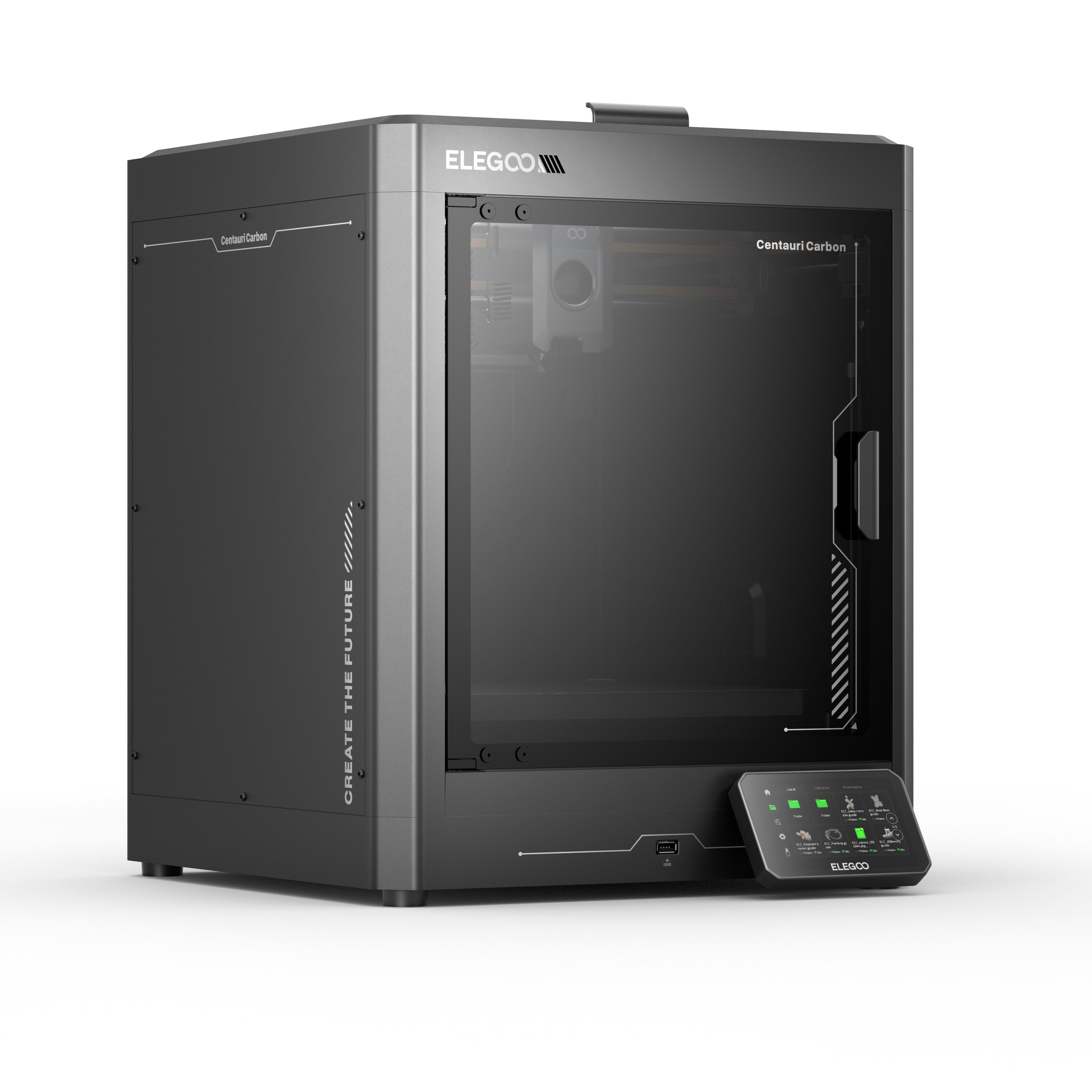

Elegoo Centauri Carbon
The Centauri Carbon is Elegoo’s first core XY printer, going up against printers like the Creality K1C, Bambu Lab P1S, and Bambu Lab X1 but at half the price in many cases. This would seem like a joke if the printer itself wasn’t so competent and well put together.


Elegoo Centauri Carbon
The Centauri Carbon is Elegoo’s first core XY printer, going up against printers like the Creality K1C, Bambu Lab P1S, and Bambu Lab X1 but at half the price in many cases. This would seem like a joke if the printer itself wasn’t so competent and well put together.
- Impressive print quality
- A game-changing price
- Solid build quality
- Numerous smart little touches
- Future compatibility with multi-material systems
- Software isn’t fully baked
- Hard to see what’s going on inside the printer
- Filament loading could be easier

